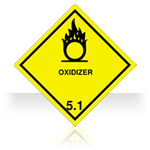Product Reviews
FFT Fuel Treatment
Tested July 17th 2007 to October 19th 2007 
Website: www.fftfuelsaver.com and futurefueltechnologies.com


With the ever-rising price of petrol, I've been getting a lot of email asking me to look into another of the miracle fuel additives that claims to increase your gas mileage. The basic claim from FFT is that adding 30ml (1oz) of their product to every 38 litres (10 gallons) of petrol will give you a 10-20% increase in fuel economy and a drop in CO2 and NOx emissions. I will be testing the mileage claims. The emission claims are a little curious given that the material safety data sheet (MSDS) for this product lists CO2 as one of the main byproducts of its combustion.
In order to do this test, I collected a year's worth of gas-mileage information for my Honda Element. I've been collating the results at greenhybrid.com which allows me to enter the number of gallons per fill-up vs. the recorded mileage on the odometer. I've been careful to use the same pump at the same gas station in order to eliminate differences in the sensitivity of the pumping and cutoff systems. Each fill-up has been to the point where the pump automatically shuts off. A fully annotated record of my gas mileage is available at the greenhybrid.com website by following this link: Honda Element gas mileage. By hovering over any of the [more] links on that page, you can see comments relating to that particular fill-up.
The product
The product comes in a dispensing bottle and looks like a medium-strong tea. It has a slight lemon smell to it. According to the MSDS, the main hazardous (read: useful) ingredients in FFT are as follows:

- t-butyl perbenzoate (t-BP) - An explosive oxidising agent. (t-butyl perbenzoate data sheet)
- Lupersol DDM-9 - Methyl ethyl ketone peroxide - an explosive oxidising agent that undergoes self-accelerating decomposition, exploding at 230°F. This one is sensitive to sunlight and is incompatible with natural and synthetic rubbers and chemical accelerators. At 200ppm this would appear to be the main component. (DDM-9 data sheet)
- d-limonene - a highly flammable and combustible peroxide compound. Also sensitive to light and can oxidise in air. Interestingly this is listed as being incompatible with other strong oxidising agents. It's what gives FFT the slight lemon smell. (d-limonene data sheet)
Essentially then, FFT Gasoline Additive would appear to be an oxidising agent or an oxygenating reagent. These are substances that, while not essentially combustible on their own, may, by yielding oxygen, cause, or contribute to, the combustion of another material. In other words, this stuff ought to make regular petrol burn better by adding oxygen to it during the combustion process.
Conclusion : don't waste your money

At the beginning of this test, the overall gas-mileage for my Element was 19.8mpg after 8,213 miles. You can see variations in the graph above based on weather and trip types but the mean average is normally just below that 20mpg line. That's a one-year cycle of everyday driving including road trips, short in-town commuting, and mountain driving during the ski season. The first tank with FFT is the first arrow on the above graph - you can see it dropped off from 18.9mpg to 16.4mpg instantly. The test ended at the second arrow on the above graph, at which point you can see the consistency of readings appears to come back.
After a three month road test, in all driving conditions, following the instructions to the letter on the FFT product packaging, my fuel economy dropped from an average 19.8mpg down to 19.0mpg. The previously reasonably steady mpg readings went all over the map from very high to very low - all the consistency went away. That's a real car, in real everyday use, commuting to and from work in traffic, with road trips, shopping trips, one, two and four people in the car - essentially what you and I do everyday to our cars.
